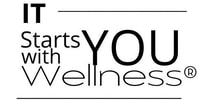MeditationMediation is a great way to focus and relax the mind, and when the mind is truly focused and relaxed, it won't allow additional thoughts into it. This is a great practice to include daily, since the ability to be able to focus away from destructive thoughts can help you switch gears more easily, especially when thoughts and triggers of anxiety come up.
The classes are split into two groups, Guided Meditation, and Silent Meditation. With Guided Meditations, I will give you something to focus on, something you can picture in your mind. Silent Meditations will either be silent, or have sounds of the ocean or music on to focus onto. Whether you choose guided or silent, they are both great at helping you learn to focus your mind. Again, when the mind is focused on one thing in the present, the mind can't become cluttered with thoughts of worry. So, quiet meditation to guided meditations, pick your fancy and allow yourself to get absorbed in focus and relaxation. This is great tool for creating the Mind / Body connection. Allow yourself to open up to your own possibilities and create an atmosphere to find relaxation. The idea is to let go..relax and don't try to control anything..feel like you want to fall asleep, but don't. You want to be alert, but totally relaxed. Allow your mind to float into nothingness and feel that inner peace within. If you have trouble with this, as thoughts enter your mind, just acknowledge the thought, then focus on something to draw attention away from the thought (like the music or your breath) and start the process again. With this you are giving the mind something to do. By focusing on the breath, or listening intently to music, you are giving the mind something to focus on, so other thoughts aren't as important. This is a practice that takes time and patience. BE PATIENT with yourself. Remember its a practice for the mind. By doing this, we are first learning that we have a lot of thoughts. We are also learning that we can turn away from these thoughts either on our own or with the help of focus techniques. The more you practice, the easier it all becomes, and easier it is to find that peace within. Meditation tips: (if just starting out)
|
Relaxation Meditation (2 min.)
Guided Meditations:
Beginner Guided Meditation:
|
***All pictures are the sole property of It Starts With You Wellness®. All videos and music are sole property of It Starts With You Wellness®. No pictures, videos or music shall be copied without written permission from It Starts With You Wellness®.
